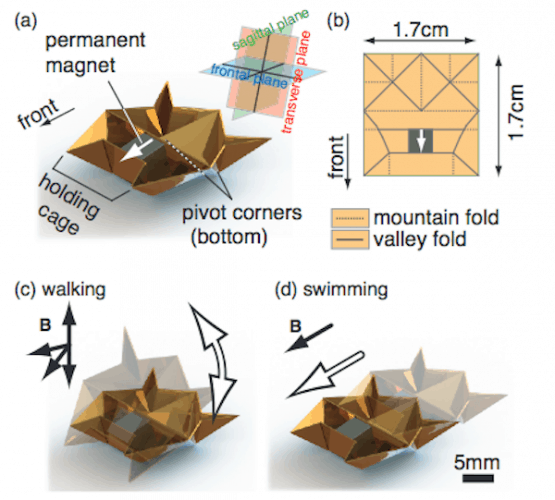It folds, it walks, it swims, it dissolves: the self-building mini-robot
This week’s video shows how a sheet can self-fold into a functional 3D robot, actuate immediately for untethered walking and swimming, and then dissolve in liquid.

In use, the robot could be used in medical applications but making one as agile – and disposable - as this one has proved challenging.
According to its developers from MIT and TU Munich, the sheet weighs 0.31g, spans 1.7cm square in size, features a cubic neodymium magnet, and can be thermally activated to self-fold. They add that since the robot has asymmetric body balance along the sagittal axis, the robot can walk at a speed of 3.8 body-length/s being remotely controlled by an alternating external magnetic field.
Developed models include an acetone-degradable version, which allows the entire robot’s body to vanish in a liquid.
Shuhei Miyashita, Steven Guitron, Cynthia R. Sung, and Daniela Rus from MIT and Marvin Ludersdorfer TU Munich describe how they developed with robot in a paper titled: An untethered miniature origami robot that self-folds, walks, swims, and degrades.

Register now to continue reading
Thanks for visiting The Engineer. You’ve now reached your monthly limit of news stories. Register for free to unlock unlimited access to all of our news coverage, as well as premium content including opinion, in-depth features and special reports.
Benefits of registering
-
In-depth insights and coverage of key emerging trends
-
Unrestricted access to special reports throughout the year
-
Daily technology news delivered straight to your inbox










Water Sector Talent Exodus Could Cripple The Sector
Maybe if things are essential for the running of a country and we want to pay a fair price we should be running these utilities on a not for profit...